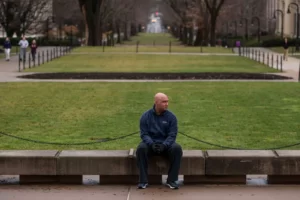Earlier this month the 2016 Barlett & Steele bronze award was given to “OxyContin’s 12-Hour Problem,” the Los Angeles Times’ investigation into how America’s bestselling prescriptive painkiller helped fuel a nationwide opioid epidemic. The Times reporters discovered that marketers at Purdue Pharma had knowingly misrepresented the drug as providing 12-hour relief from pain, an exaggeration that led to abuse and addiction. In the words of reporter Harriet Ryan, here’s how they did it.
How did you find this story?
We’ve actually been writing about the prescription drug epidemic for years now—it has hit California hard. This new investigation came out of a series we did in 2012 called “Dying for Relief.” It challenged the conventional wisdom at the time that the surge in fatal overdoses was due mostly to pills obtained illegally, either bought from dealers or stolen from pharmacies or medicine cabinets. But we found that almost half of prescription drug deaths in Southern California involved medications prescribed by doctors.
So in that series, we were looking at how physicians, pharmacies and state regulators contributed to the overdose problem. But after that, our editors urged us to look at the pharmaceutical companies that make the painkillers.
Why did you choose to focus specifically on OxyContin?
It’s the bestselling painkiller in the country. OxyContin was the subject of intense media coverage in the early 2000s, and Purdue Pharma and three of its executives pleaded guilty to fraudulent marketing in 2007. So we didn’t know if there was anything left to report. But then two of our reporters attended a drug dependency conference and heard a presentation by a Purdue scientist that mentioned the company’s Region Zero program. Nobody really knew much about it at the time, but company officials would use that to track doctors they thought might be catering to drug addicts and dealers.
We published a story about Region Zero in 2013 and as a result, we became aware of a problem with OxyContin’s duration. We also got thousands of pages of internal Purdue documents, which ultimately led to this story.
Tell us about the documents. You must have had to sift through hundreds of documents.
It was literally thousands of pages of documents. They’re internal memos, letters, emails, field sales reports, research studies and other materials written by Purdue scientists, executives, sales representatives, security personnel and attorneys.
A lot of these documents are from files sealed by courts. Others came from Freedom of Information Act OIA requests, court files and sworn testimony from many lawsuits. We also talked to current and former users of OxyContin as well as experts on pain management, addiction and pharmacology.
Why hasn’t anyone done this investigation before? Hasn’t OxyContin been around for 20 years?
Other issues with OxyContin were perceived as more important, and they got the attention. For example, the pills were easy for addicts to crush and snort for a quick, intense high. Purdue eventually introduced a tamper-resistant version of OxyContin. And there was the company’s deceptive marketing of OxyContin, which depicted the drug as less addictive than it really was. The company and three executives pleaded guilty in federal court in 2007 to fraudulent marketing, and Purdue paid a record $635-million fine.
So nobody questioned the pill’s 12-hour duration?
Well, government agencies and attorneys that investigated or sued Purdue did raise questions about it. For example, the Justice Department sent the company at least one subpoena in 2005 to request information about it, and the state of Florida drafted a complaint against Purdue that accused it, among other things, of overstating the pill’s duration. But those other problems–the crushability, the deceptive marketing–got most of the attention. So when there were settlements, they weren’t about the duration issue.
You were able to talk to a lot of former OxyContin users with such incredible stories. How did you find them?
We started by looking in the treatment community for people who had become addicted to OxyContin after taking it for pain, not for recreational use. We asked addiction doctors, rehab staff, advocacy groups, recovery programs and others for leads. We also searched for people through addiction message boards.
We didn’t tell them that we were looking at the duration issue–we just asked recovering addicts to tell us their stories.
What’s next? for you? Is there more coming on Purdue?
Yes, we’re working on more stories about Purdue. Stay tuned. In fact, if you’ve had an experience with OxyContin, or know someone who has, we’d like to hear your story too.











